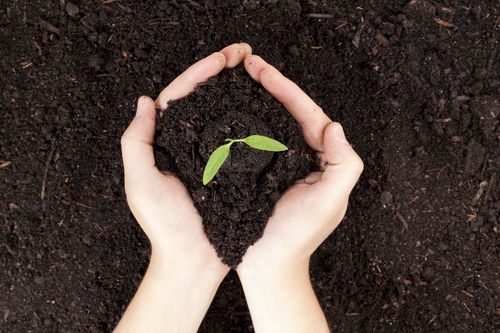Garden fertilizer
What type of garden fertilizer do you need? Let me tell you.
It seems many people have very little information about garden fertilizer. I get to field some fantastic questions about the stuff and I want to take a little time to go over some of the basics. I promise this will be fairly simple, and with any luck it won’t trigger bad memories from chemistry class.
Nitrogen / Phosphorus / Potassium
 Nitrogen is one of the primary fuels for plants, it is needed for new growth and plants pull it from the soil where they are growing. Some things (like corn) deplete the soil of nitrogen rapidly. In a natural environment rotting plant and animal matter stays where it falls and will replenish these nutrients, but in most yards and gardens those things get cleaned up before they can feed the soil. Low nitrogen is usually exhibited by excessive clover in lawns, and discolored leaves on plants.
Nitrogen is one of the primary fuels for plants, it is needed for new growth and plants pull it from the soil where they are growing. Some things (like corn) deplete the soil of nitrogen rapidly. In a natural environment rotting plant and animal matter stays where it falls and will replenish these nutrients, but in most yards and gardens those things get cleaned up before they can feed the soil. Low nitrogen is usually exhibited by excessive clover in lawns, and discolored leaves on plants.
Phosphorus is used by plants to make flowers, new roots, fruit, and help fight off disease. It’s not needed quite as much as you may think and is extremely harmful to marine environments. In fact, this year I have used more 8-0-4 than almost any other fertilizer, which has no phosphorus. It is actually against the law to apply phosphorous to healthy lawns because it runs off so readily and is so harmful to the environment.
Plants need potassium for speedy growth, and to make woody bits like stems. Often you will see lawn fertilizer marketed as being formulated especially for the winter months, which means it has more than the usual amount of potassium to prevent dormancy.
Garden fertilizer basics
Whichever garden fertilizer you choose it’s mainly measured by three numbers, such as 8-1-3. This is not a secret code; it describes the amount of Nitrogen, Phosphorus, and Potassium. There are other ingredients in fertilizers that do various things, but these are the big three.
There are also fast and slow release fertilizers, which are somewhat self-explanatory. Be aware however that fast fertilizers can sometimes cause excessive growth that the plants can’t maintain over the long term.
Remember this: Nitrogen for new growth; Phosphorus for blooms; Potassium for strong growth.
Garden fertilizer marketing
Another thing to keep in mind is the marketing techniques that manufacturers use. Is there a big difference between 6-2-5 rose food and 6-2-5 general purpose fertilizer? Probably not as much as they would like you to believe. There are some specialty products for plants that have special needs, but generally a good, all-purpose fertilizer is all you need.
When does a garden need fertilizer?
Many people fertilize their garden in the spring. If you only want to fertilize once a year, early fall and late fall are the best times. So right now!
I almost always recommend using organic fertilizer versus synthetic. Organic is easier to use because it does not burn leaves as easily and is usually more balanced than synthetic; yes you will have to use more, but it lasts longer and does not run off as readily. Balance in fertilizer is how we describe the ratios of those three numbers. Chicken manure averages about 1-.75-.5, whereas some of the lab made fertilizers get to 42-0-0 and beyond; at those ratios, a little spill now is a dead spot in the lawn later on.
For help with garden fertilizer, Contact Us at Environmental Construction Inc.
I hope you now have a better understanding of fertilizer than you did before. Hopefully, it will benefit your plants and possibly make your high school chemistry teacher smile.

